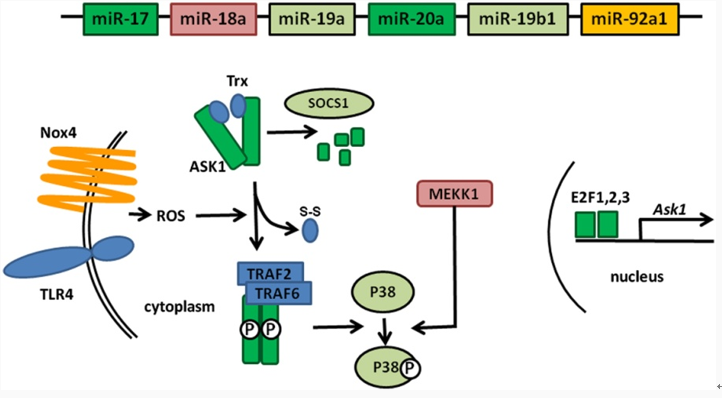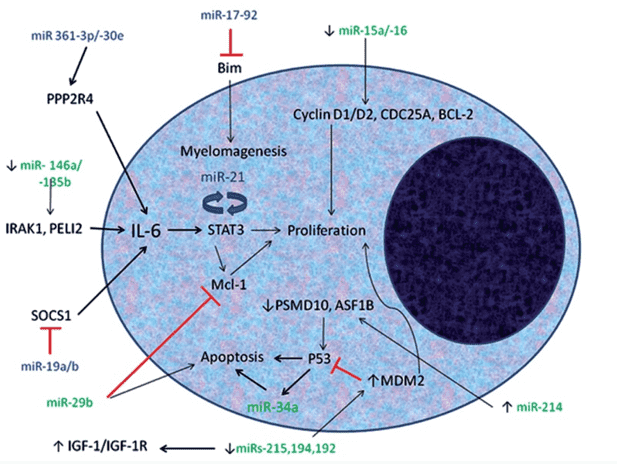As an indubitable pioneer of in vitro diagnostics (IVD) antibodies development and manufacture, Creative Biolabs offers a variety of high quality IVD antibodies custom development service for miR-19a marker to diagnose myocardial infarction (MI) and multiple myeloma (MM).
MicroRNAs (miRNAs), endogenous small non-coding singlestranded RNAs, are 19 to 23 in length. They have been proven to have oncogenic or tumor suppressive functions via their negative post-transcriptional modulation of protein coding genes. A number of miRNAs show binding activity to the 39 untranslated region (39UTR) of target mRNAs as a consequence of sequence complementarity. Besides, it has been calculated that the miRNAs in a whole cell modulate about 30% of all protein-coding genes. miRNA has a number of roles in vascular and cardiac damage and repair, and may display the susceptibility to cardiovascular disease. Several studies have indicated that miRNAs are helpful markers for the diagnosis of various cancers and other diseases. Circulating miR-1 was discovered to be a strong, independent biomarker for diagnosis of acute myocardial infarction (AMI), on account of a clinical research of 93 patients and 66 healthy subjects. miR-19a, an inflammation-associated miRNA, serves essential roles in vascular homeostasis and inflammatory responses.
 Fig.1 Illustrative representation of how miR-17-92 cluster elements globally target the ASK1 signalosome, including miR-19a’s association with inflammatory pathways.1
Fig.1 Illustrative representation of how miR-17-92 cluster elements globally target the ASK1 signalosome, including miR-19a’s association with inflammatory pathways.1
miR-19a Marker of Myocardial Infarction
Coronary artery disease (CAD) and its most severe complication, AMI, are leading causes of death. Decreasing the incidence, disability, and mortality of AMI has gained much attention from researchers. A lot of clinical studies and more available new markers are demanded to be exploited to early diagnosis of AMI at biochemical and molecular levels. Recently, a study has shown that circulating miR-19a expression in the AMI group was higher than that in controls. Besides, the diagnostic effect of circulating miR-19a levels was much better than commonly used clinical markers, including CK-MB, BNP, hs-TnI, etc. Their results revealed that miR-19a levels are close correlated with susceptibility to AMI, and miR-19a is a potential biomarker for AMI.
miR-19a Marker of Multiple Myeloma
MM, a hematologic malignancy, is defined by clonal expansion of plasmas cells correlated with paraproteins in the blood, bone lesions, hypercalcemia and renal failure. It constitutes about 13% of hematological malignancies and is mainly considered a disease within the aging population. A recent study has provided new insights into the miR-17–92 cluster in MM. They indicated that the expression of miRNAs in serum of MM patients changes observably, depending on stage of disease. Their results also displayed that miR-19a may play as crucial prognostic markers for identification of MM and detection of disease progression.
 Fig.2 miRNAs contribute to MM pathogenesis through modulation of multiple signaling cascades in myeloma cells, with miR-19a as a potential diagnostic biomarker.2
Fig.2 miRNAs contribute to MM pathogenesis through modulation of multiple signaling cascades in myeloma cells, with miR-19a as a potential diagnostic biomarker.2
With the rapid development of IVD market, IVD antibodies are widely used for immunology methods of IVD. Creative Biolabs offers a variety of high-affinity IVD antibody development services for miR-19a marker to diagnose diseases. Creative Biolabs also provides other IVD antibodies. Please feel free to contact us for more information and a detailed quote.
References
- Philippe, Lucas, et al. "The miR-17∼ 92 cluster: a key player in the control of inflammation during rheumatoid arthritis." Frontiers in immunology 4 (2013): 70.
- Saki, Najmaldin, et al. "Association of chromosomal translocation and miRNA expression with the pathogenesis of multiple myeloma." Cell Journal (Yakhteh) 16.2 (2014): 99.
For Research Use Only.

